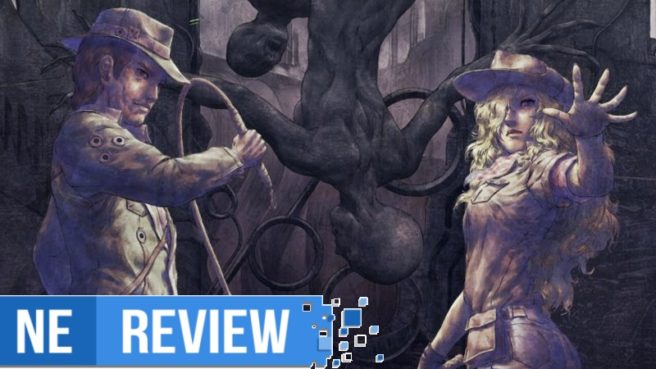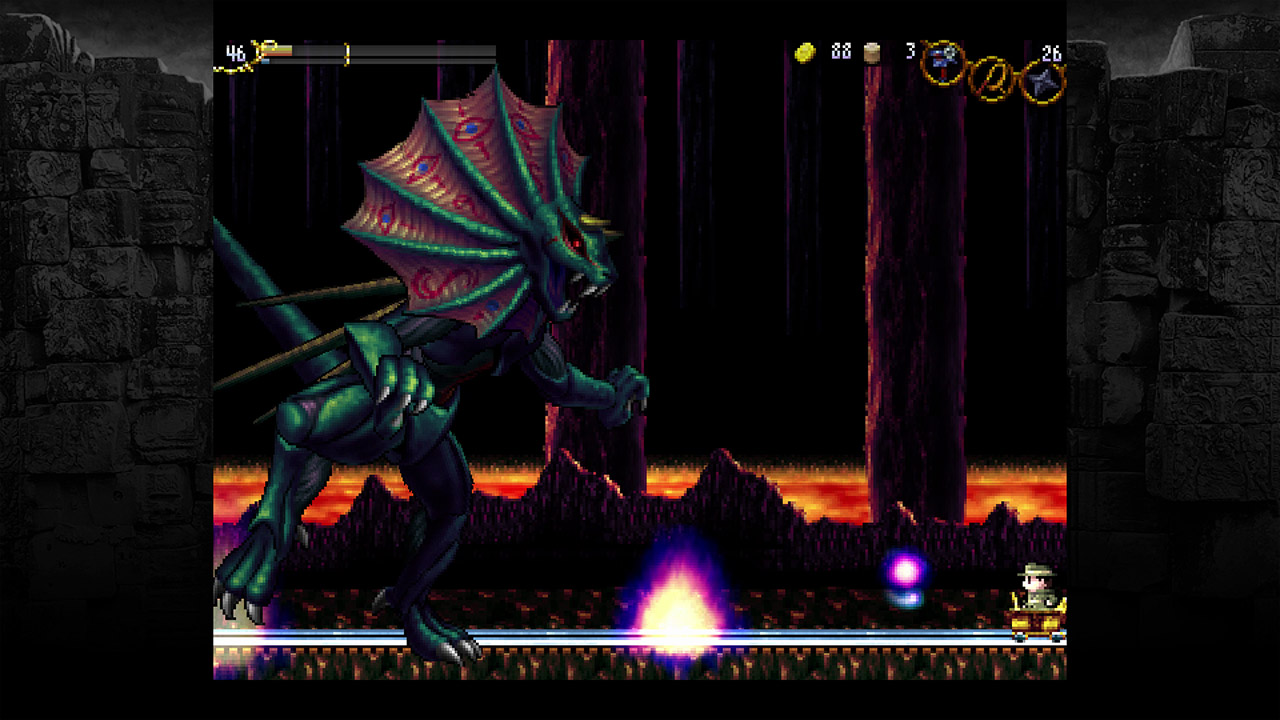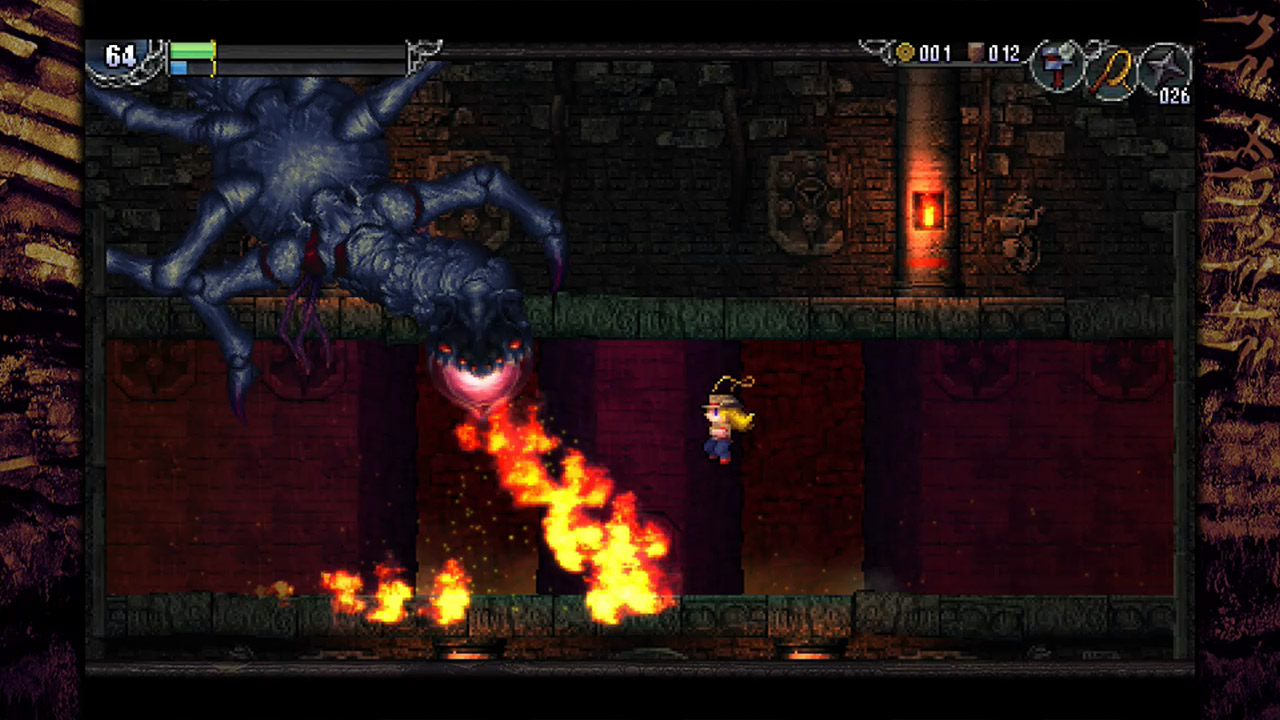[Review] La-Mulana 1 & 2
System: Switch
Release date: March 17, 2020
Developer: Nigoro / Playism
Publisher: NIS America
It seems like every other game released lately is a retro throwback to the golden gaming days of the past, just with all the rough edges smoothed out. La-Mulana 1 and 2 are a bit different. This infamous pair of puzzle games is designed in the vein of classic PC adventure and puzzle games on the MSX – rough edges included. Whereas most throwbacks tend to tone down the retro difficulty of their inspirations, La Mulana thrives on it. Make no mistake: La-Mulana 1 and 2 are perhaps two of the most challenging puzzle games ever created. While this will likely prove overwhelming for many players, those who long for the incredible payoff that come with overcoming the absurd challenges of La-Mulana’s puzzles will be more than satisfied.
La-Mulana 1 starts out simple enough. An explorer called Lemeza has reached the ancient ruins of La-Mulana and sets out to explore the many secrets hidden within them. But for all the convoluted lore that emerges throughout the course of the campaign, the greatest mysteries of La-Mulana come in its gameplay. The ruins are filled with increasingly inscrutable puzzles that will push your skills of logic to the very limit. At the same time, the game offers little to no meaningful guidance throughout it all – the environments are open-ended, and thus there’s nothing stopping you from missing a critical item in one part of the dungeon and running into roadblock after roadblock in other sections.
That’s not to say that you are completely without guidance. La-Mulana actually offers a fairly large amount of help, with hint messages strewn throughout the ruins and even a handful of characters that can offer you advice. Yet these messages are typically extremely vague, sometimes making the puzzles even more mysterious than they would be without them. They often require an encyclopedic knowledge of the game to understand just what they’re talking about. On top of this, the game design is often essentially cruel, filled with secret traps and unavoidable enemies that force you to lose health. Expect to spend hours beating your head against the wall, furiously asking yourself why you can’t solve this puzzle – and why you haven’t looked up a guide yet.
La-Mulana 2 is much the same way. This sequel, released more than a decade after the original, features all the hardcore puzzle design and unforgiving gameplay that made its prequel so infamous. It follows Lameza’s daughter as she ventures into an entirely new set of ruins to investigate her father’s disappearance. Like its prequel before it, La-Mulana 2 is stuffed to the brim with surpassingly difficult puzzles in a generally open setting. That said, La-Mulana 2 is a bit more generous with its clues and directions the prequel before it. Its clues are far more direct, and without completely giving the solution away, they provide much more direction to the player, which helps to mitigate the puzzling frustration a bit. That isn’t to say that La-Mulana 2 is much easier than the first game – as clear as the hints can be, they don’t keep the game from often being cruel with the difficulty of its puzzles or the challenge of its all-new mini-bosses.
Of course, as excruciating as the overwhelming difficulty of both games can be, the feeling of achievement that you get when you actually manage to solve a puzzle is second to none. La-Mulana 1 and 2 are puzzle games for puzzle fans – they truly reward you for thinking outside the box and overcoming the challenges they put before you. But the real question is whether you’re willing to endure hours and hours of hopeless frustration just for a few moments of euphoria, all before dipping back into several more hours of that same frustration. It’s supremely satisfying, but there’s an extremely high wall to climb over before getting to it, and many players simply won’t enjoy having to conquer that wall time and again throughout the course of the games.
Unlike their puzzles, players of all abilities should be able to appreciate the games’ aesthetics. The first La-Mulana is relatively minimalist, with its quirky pixelated visuals looking like something between a SNES and PS1 game. The sequel is certainly a development on this, with far more elaborate graphical effects and smoother animations. Yet both games are united in having truly outstanding soundtracks, filled with high energy tunes and memorable, driving melodies. This is perhaps a bit ironic, since the gameplay is typically very slow and methodical whereas the music is anything but that. It does serve as a decent motivator to keep you going throughout the dense puzzles, and also provides a solid beat to move to when you’re hopelessly lurking through the ruins.
The Verdict
La-Mulana 1 and 2 get a thumbs up rating with a major reservation. There’s no denying their technical brilliance as puzzle games. They’re filled with brainteasers that will consume your brain for dozens and dozens of hours on end, and the feeling of finally solving them is beyond compare. But that’s also the exact concern with this package. The puzzles are supremely demanding, and the games can be outright cruel with their cryptic hints and punishing tricks and traps. For all but the most seasoned puzzler fans, this will likely prove to be more overwhelming than enjoyable. However, if you’re ready to work through some of the most difficult, challenging, and rewarding puzzles that the genre has to over (and if you’re not too proud to turn to a guide every once in a while), then La-Mulana 1 and 2 will easily fit the bill.
Review copy provided by the publisher for the purposes of this review.



